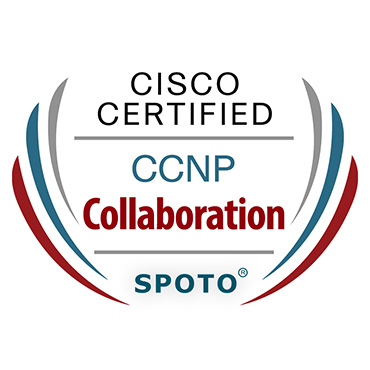There are four main types of routers in the network:
·Read-Only Memory (ROM)
· Flash memory
· Random Access Memory (RAM)
· Non-volatile RAM (NVRAM)
Among all types of memory, RAM is the only type of memory that loses its contents when the router is powered on or when power is supplied. Today, we will briefly explain the main purpose of each memory of the router.
ROM
The ROM stores the router’s boot (Startup) software. This is the first software the router runs and is responsible for getting the router into a normal working state. Some routers store a complete set of IOS in ROM so that they can be used as an emergency when another IOS cannot be used. The ROM is usually made on one or more chips and soldered to the router host.
Flash Memory
The main purpose of flash memory is to save 10S software and maintain the normal operation of the router. If the router has flash memory installed, it is the default location of the IOS software used to boot the router. As long as the flash memory capacity is sufficient, multiple IOS images can be saved to provide multiple boot options. The flash memory is either built on the SIMM of the motherboard or made into a PCMCIA card.
RAM
RAM has a wide range of functions and it is impossible to list them here. But there are two things worth mentioning, namely the IOS system table and buffer. IOS meets all its regular storage needs through RAM.
The main function of NVRAM is to save the configuration data that IOS reads in when the router starts. This configuration is called “startup configuration”.
Interface
All routers have an “Interface”. In the front, we have listed some of the interface types supported by the router. In routers that use I0S, each interface has its own name and number. The full name of an interface consists of its type identifier and at least one number. The numbering starts from zero 0.
For routers with fixed interfaces, or routers with modular interfaces that can only be changed after the host is turned off, there is only one digit in the full name of the interface, and they are numbered according to their physical order in the router.
For example, Ethernet0 is the name of the first Ethernet interface; and Serial2 is the name of the third serial port. If the router supports “online insertion and deletion”, or has the ability to change the physical interface configuration dynamically (without turning off the router) (hot-swapping of the card), then the full name of an interface should contain at least two numbers, with a forward slant in the middle Bars, are separated (/).
Among them, the first number represents the slot number, the interface processor card will be installed in this slot; the second number represents the port number of the interface processor.
For example, in a 7507 router, Ethernet5 / 0 represents the first Ethernet interface on slot 5-assuming that slot 5 is plugged into an Ethernet interface processor card.
Some routers also support “Universal Interface Processor” (VIP). An interface name on the VIP consists of three digits, separated by a forward slash (/). The format of the interface number is “slot / port adapter/port”.
For example, Ethemet4 / 0/1 refers to the second Ethernet interface of the first port adapter on slot 4. You may feel a little confused when you first encounter these numbers. But don’t worry, there is a way for the router to tell us the full names of all its interfaces.
Console Port
Almost all routers have a console port installed behind the router. The console port provides an EIA / TIA-232 (formerly known as RS-232) asynchronous serial interface, enabling us to communicate with the router. As for the type of physical connection established with the console port, it depends on the model of the router.
Some routers use a DB25 female connection (DB25F), while others use RJ45 connectors.
Generally, smaller routers use RJ45 console connectors, while larger routers use DB25 console connectors.
Auxiliary Port
Most Cisco routers are equipped with an “auxiliary port” (Auxiliary Port). It is similar to the console turbulence and provides an EIA / TIA-232 asynchronous serial connection, enabling us to communicate with the router. The auxiliary port is usually used to connect to the modem to achieve remote management of the router.
The remote communication link is usually not used to transmit the usual routing data packets. Its main function is to access a router after the network path or loop fails.
Configuration File
There are two types of IOS configuration:
1) Running configuration
2) Startup configuration
Both are displayed in ASCII text format. Therefore, we can easily read and operate. Only one router’s processor is responsible for performing the work required to process data packets.
Such as maintaining various tables required for routing and bridging and making routing decisions. The speed at which a router processes packets depends largely on the type of processor.
RAM
Choose one of these two types. The running configuration is sometimes called the “active configuration”, which resides in RAM and contains the IOS configuration commands that are currently “active” in the router. When configuring IOS, it is equivalent to changing the running configuration of the router.
Start Configuration
The startup configuration resides in NVRAM and contains the configuration commands that you want to execute when the router starts. After the startup is complete, the command in the startup configuration becomes “Run Configuration”.
Sometimes the startup configuration is also called “backup configuration”.
This is because after modifying and approving the running configuration, you should usually copy the running configuration to NVRAM, and “back up” the changes you made so that it can be recalled when the router starts next time.
Process
The so-called I0S “process” refers to a special software task running on the router to implement a certain function. For example, the routing of IP packets is done by one process; the routing of AppleTalk packets is done by another process.
Other examples of I0S processes are routing protocols and memory allocation routines.
When we put commands in the configuration file to configure IOS, it is actually equivalent to controlling the behavior of each process that constitutes IOS. All these processes are running simultaneously on the router.
As for the number and types of processes that can run on a router, it depends on the speed of the router’s CPU and the amount of RAM installed. It can be seen that this is similar to the number of programs running on a PC depending on the type of CPU and the amount of RAM equipped.
About SPOTO
SPOTO is a Technical team that has 17-year experience in IT Certification exam training and reference materials involving study guides, questions, and answers or practice tests, tutorial videos, etc. SPOTO has an excellent achievement for several years, and it has close cooperation with Tencent.com
We are specialized in Cisco CCNA, CCNP, CCNP DevNet, CCDE, EI, CompTIA+, CISSP, CISM, CISA, PMP, NPDP, ACP, Microsoft, Huawei, Redhat, Linux, Oracle, Aruba, F5, CWNA, and Palo Alto Certification practice exams.












Comments